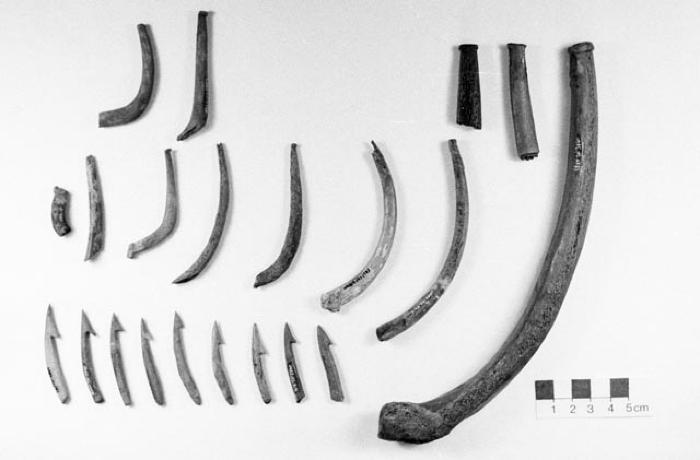Fishhook — Iqsak

Archaeological sites in the Kodiak Archipelago illustrate that Alutiiq people have harvested marine fish for many thousands of years. Even the earliest camps hold grooved cobbles used to weight fishing rigs to the ocean floor. More recent sites preserve the wood and bone parts of these rigs. Alutiiq people landed halibut, cod, and rockfish with hooks carved from bone. Small barbed pieces of bone were lashed to a curved shank, often fashioned from a seal rib. Then, a pair of hooks was tied to a wooden bar, or rig spreader, with one hook suspended from each end. Then a stone sinker was tied from the center of the rig. Each fishhook received a baited with clams or fish and then lowered to the ocean floor with a line made from bull kelp. Some rigs included a wooden snood-a slender wooden leader-to strengthen the line above the hook.
In the historic era, metal hooks, monofilament, and steel leaders replaced bone barbs, kelp line, and wooden snoods. Whatever the materials they are made of, however, the halibut fishing tackle used by sportsmen is essentially the same as the rigging ancient kayakers used to pull fish from Chiniak Bay.
